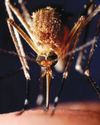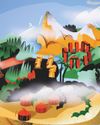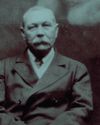
We’ve come a long way since thinking that comets were ghostly apparitions in the sky that foretold disaster and disease. Now we understand that these mysterious celestial objects are time capsules to an earlier era in the history of the Solar System. They can tell us about the days when the planets were forming. Comets can also reveal some of the chemical constituents that would have been present on the early Earth and so could have contributed to the origin of life.
It’s therefore no surprise that the various space agencies around the world are keen to explore comets with spacecraft. Currently under development is Comet Interceptor, which is due for launch in 2028 and will allow us to inspect these icy bodies in greater detail. But it’s by no means the first mission to visit a comet.
In 1986, Europe, the USSR and Japan launched missions to fly past Halley’s Comet. Of these, the spacecraft that drew the closest was the Giotto mission, from the European Space Agency (ESA). It gave us the first image of a comet’s icy nucleus and showed that gas was shooting into space from jets on the surface.
ESA’s more recent comet mission, Rosetta, rendezvoused with the comet 67P/Churyumov Gerasimenko, and followed it for two years between 2014 and 2016. It revealed unprecedented information about how a comet behaves as it draws close to the Sun, and then heads into deep space again. One thing became very clear. “There are a lot of evolutionary processes taking place on the surface layers of a comet. The surface actually changed as we were watching with Rosetta,” says Dr Colin Snodgrass, an astronomer from the University of Edinburgh who was part of the Rosetta team.
This story is from the {{IssueName}} edition of {{MagazineName}}.
Start your 7-day Magzter GOLD free trial to access thousands of curated premium stories, and 9,000+ magazines and newspapers.
Already a subscriber ? Sign In
This story is from the {{IssueName}} edition of {{MagazineName}}.
Start your 7-day Magzter GOLD free trial to access thousands of curated premium stories, and 9,000+ magazines and newspapers.
Already a subscriber? Sign In

World's First Malaria Vaccine
The World Health Organization’s director-general hails ‘historic moment’ as mass immunisation of African children begins

Is River Pollution Putting The Species In Jeopardy Again?
Ten years ago, it was jubilantly announced that o ers had returned to every county in England. But is river pollution putting the species in jeopardy again?

The Big Burnout
Long hours, low pay and a lack of appreciation — among other things — can make for a stressful workplace and lead to burnout. It’s something we should all be concerned about, because over half of the workforce reports feeling it

Putting Nature To Rights
More countries are enshrining the right to a clean environment into law. So if a company or government is impinging upon that right, you could take them to court

Mega Spaceship: Is It Possible For China To Build A Kilometre-Long Spacecraft?
Buoyed on by its successful Moon missions, China has launched a five-year study to investigate the possibility of building the biggest-ever spacecraft

Are We Getting Happier?
Enjoying more good days than bad? Feel like that bounce in your step’s getting bigger? HELEN RUSSELL looks into whether we’re all feeling more cheery…

“Unless the Japanese got the US off their backs in the Pacific, they believed they would face complete destruction”
Eighty years ago Japan’s surprise raid on Pearl Harbor forced the US offthe fence and into the Second World War. Ellie Cawthorne is making a new HistoryExtra podcast series about the attack, and she spoke to Christopher Harding about the long roots of Japan’s disastrous decision

Your Mysterious Brain
Science has mapped the surface of Mars and translated the code for life. By comparison, we know next to nothing about what’s between our ears. Over the next few pages, we ask leading scientists to answer some of the most important questions about our brains…

Why Do We Fall In Love?
Is it companionship, procreation or something more? DR ANNA MACHIN reveals what makes us so willing to become targets for Cupid’s arrow

Detecting the dead
Following personal tragedy, the creator of that most rational of literary figures, Sherlock Holmes, developed an obsession with spiritualism. Fiona Snailham and Anna Maria Barry explore the supernatural interests of Sir Arthur Conan Doyle